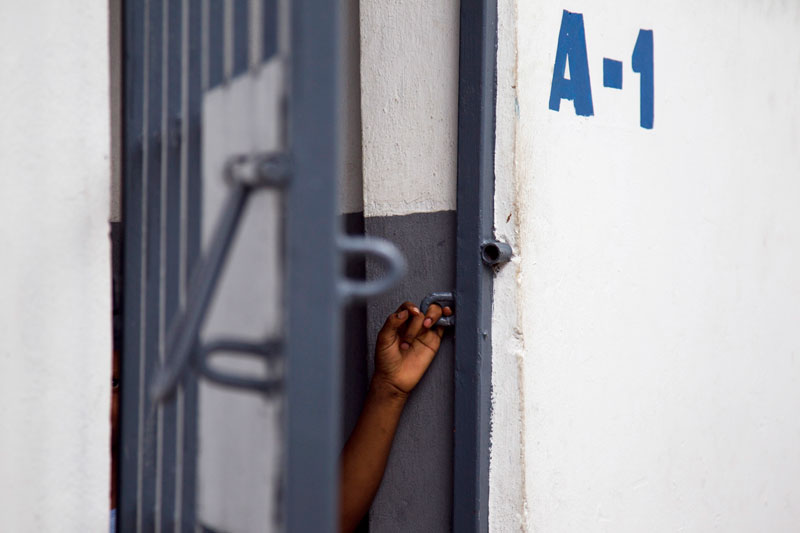Suicides and Deaths in Prison: National Report on the Rights of Persons Deprived of their Personal Liberty 2025

The phenomenon of suicides and deaths in prison is one of the most important problems in the Italian penitentiary system. By its nature, detention entails a deprivation of liberty which can have profoundly destabilising effects on the psyche of prisoners. When this is added to conditions of overcrowding, lack of psychological support and difficulties in managing the prison population, the risk of tragic episodes increases considerably. The 2025 report of the GNPL Penitentiary Observatory, based on data from the Department of Prison Administration (DAP), provides a detailed picture of the situation in the first months of the year, highlighting risk factors and possible intervention strategies.
In the first two and a half months of 2025, the total number of deaths in Italian prisons reached 57. This is extremely worrying not only for their number, but also for the type of events recorded. Of these, 13 were classified as suicides, 11 as deaths from causes yet to be determined, and 33 as a consequence of natural causes. This suggests the need for an in-depth investigation into living conditions within penal institutions and the effectiveness of prevention mechanisms.
The number of suicides recorded in the first months of 2025 does not follow a uniform pattern throughout the country. Some regions are particularly affected, with Lombardy having the highest number of cases (3), followed by Calabria, Lazio, Sardinia and Tuscany (2 each). Individual events also occurred in Abruzzo and Emilia-Romagna.
Among the penitentiaries most affected by these tragic events, we find the Case Circondariali of Florence "Sollicciano", and of Paola and Cagliari, which have recorded two suicides each. This could suggest a particular discomfort in these institutions, linked to structural problems, personnel management, or a more vulnerable population.
A more detailed analysis of the victims' profile shows that 11 out of 13 were men, with an average age of 41. Nationality shows an almost equal division between Italians (6) and foreigners (7) from Egypt, Tunisia, Romania and Algeria. These data indicate that psychological frailty has no national boundaries and that the population detained, regardless of their origin, can find themselves in conditions of extreme discomfort leading to extreme gestures.
The legal situation of suicidal prisoners varies considerably. Six of them had been sentenced, while five were awaiting trial. This underlines a particularly sensitive aspect: a significant percentage of those who took their own lives had not yet received a final sentence.
Concerning crimes attributed to victims, a distinction is made between offences against the person, including murder, attempted murder and sexual assault, and property offences, such as robbery and theft. These data could suggest that the nature of the crime affects the psychological state of the detainee, with those who have committed more serious crimes, who may experience a sense of guilt or a perception of a future without hope.
The suicide patterns follow a rather recurring pattern: most of the victims took their own lives by hanging, using rudimentary ropes, shoelaces, sheets or belts. This highlights a control and monitoring problem, as these objects continue to be easily accessible despite security protocols.
In terms of location, 11 suicides occurred in closed custody sections, while two occurred in open custody sections. In addition, some inmates were in isolation or under special supervision for suicidal risk, a sign that the preventive measures taken may not be sufficient or properly implemented.
In addition to suicides, the report highlights 11 deaths whose causes have not yet been determined with certainty. This type of event is particularly worrying, as it raises questions about the quality of health care provided to prisoners and security conditions within penal institutions.
The institutions with the highest number of deaths from unknown causes include Modena, Avellino, Bologna and Napoli Poggioreale. The victims are between 27 and 68 years old, suggesting that both young and older prisoners may be at risk.
During the first months of 2025, 33 deaths were attributed to natural causes. However, the high number of such events raises questions about the actual health status of the population in detention and the quality of medical care available.
One of the main risk factors highlighted by the report is prison overcrowding. Data show that in institutions such as Regina Coeli (184.74% overcrowding), Modena (156.64%) and Pescara (156.79%), the number of inmates far exceeds the regulatory capacity of the facilities. This overcrowding not only worsens living conditions but also affects the level of stress and psychological distress, increasing the risk of suicide and critical episodes.
To address the issue of suicide and deaths in prison, a comprehensive approach is needed that includes:
- An enhancement of psychological support, with the increase in the number of psychologists and specialised personnel within the structures;
- A reduction of overcrowding, through alternative measures to detention for minor offences;
- Targeted training for prison staff to improve early detection of signs of discomfort;
- Increased monitoring of detention conditions, with frequent inspections and the implementation of preventive measures to reduce the risk of self-harm.
The GNPL 2025 report highlights a critical situation within the Italian prison system. The number of suicides, deaths from causes to be ascertained, and natural deaths indicates the need for urgent action to improve the quality of life of prisoners and ensure a detention system that respects human dignity. Effective strategies and greater involvement of institutions and civil society will be essential to reduce the number of tragedies in Italian prisons.

